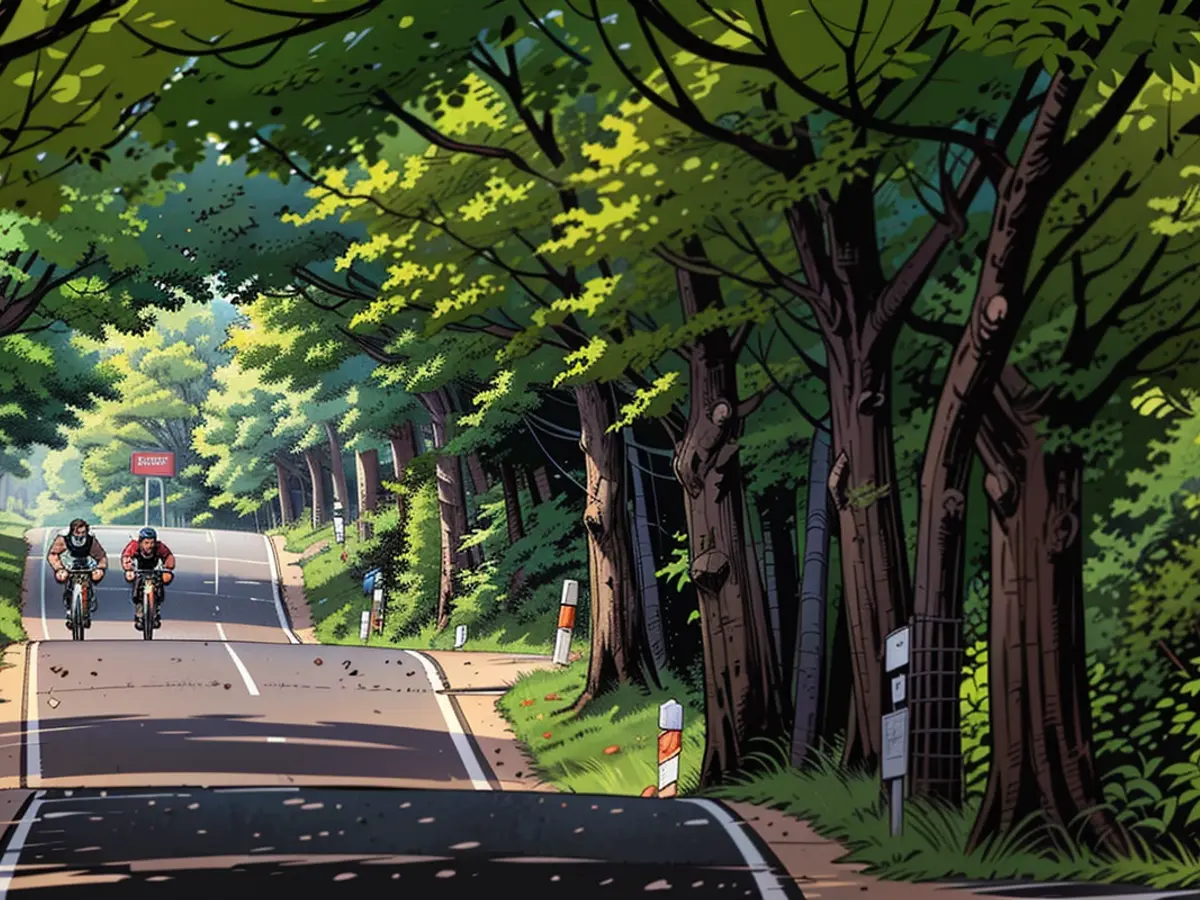Germany's paths raise apprehension
These tree-lined roads, serving as both cultural heritage and natural habitat, are experiencing a decline. Over a century old, many of these historic avenues lining our city streets are now critically endangered. The "Day of the Avenue" aims to spark discussions about their protection.
These natural landmarks and urban landscapes have shaped many roads, notably in northern and eastern Germany. However, these historical tree-lined roads are at risk, warn experts approaching the "Day of the Avenue" on October 20th. Challenges include aging trees, increased difficulty in replanting, and climate stress.
"Germany's avenues have a poor age distribution," remarks Jürgen Peters, a professor at the University of Sustainable Development in Eberswalde. The majority of these avenues were planted over a century ago or even earlier. For traffic safety reasons, several tree crowns now require intensive pruning, potentially inviting harmful pests.
"It would be necessary to plant more trees to sustain the avenue stock," Peters points out. Yet, there's now a rule for major federal and state roads requiring newly planted trees to be situated 4.50 meters away from the roadway. This often necessitates planting on private farmlands, which many landowners are reluctant to provide.
Peters calls on German states to develop concrete strategies for preserving and enhancing these avenues. Brandenburg and Mecklenburg-Vorpommern, with the highest avenue density, and Lower Saxony and North Rhine-Westphalia, still having numerous avenues, are praised. "The further south you travel, the fewer avenues there are," Peters observes.
"Stability no longer guaranteed"
"It's not always necessary to stick to the original location if it no longer serves the purpose," states Peters. Communal roads, which often lack trees, could offer great potential, he suggests, citing a study showing that 90% of communal roads lack trees.
Cornelia Behm, Head of the Avenue Protection Association, echoes this sentiment, mentioning the reduced stability in older trees and the challenges of replanting. The wider distances from the road edge, which sometimes make replanting difficult and affect the traditional "tunnel-like" appearance of driving through the tree-lined avenues, are also concerns.
Behm advocates for uniform federal protection for avenues. There's currently no central database or uniform monitoring system in place, allowing each state to set its own policies, she points out.
Avienues serve as wildlife habitats
Avienues are essential homes for numerous small animals and insects, with bats often relying on them for navigation. They also connect various wildlife habitats and contribute to air purification. Lime avenues, particularly appreciated by beekeepers for their bee-friendly properties, provide a captivating landscape experience.
Does an avenue have to be comprised of just one tree species? Behm and Peters take contrary positions. A lime avenue, for example, could consist of summer limes, winter limes, and silver limes, offering insects food over an extended period due to their differing blooming seasons.
"A uniform image is created if a single tree species is used," notes Peters. Nevertheless, alternating tree species every 300 or 400 meters, such as near an intersection, could potentially prevent the spread of pests. "And I find the idea of combined avenues quite practical from a climate perspective," he concludes.
Limes remain the most popular choice
The most common avenue trees in Germany are the lime tree, followed by the small-leaved lime, the sycamore maple, and the oak. In North Hesse, 413 oak trees, some over 250 years old, line a state road through the Reinhardswald. "We navigate between nature conservation and road safety considerations," explains Marco Lingemann of Hessen Mobil. "We're proud of our cultural heritage, but protecting it also presents a challenge." The trees are both visually and mechanically inspected at regular intervals.
While some drivers now regard these tree-lined roads as dangerous obstacles, particularly in the case of accidents, they were once seen differently: Many of these tree-lined roads were planted at the end of the 18th century to prevent wagons from sliding off the road into the ditch.
The concern for the preservation of historic tree-lined roads extends beyond German cities, with rural areas like Brandenburg and Mecklenburg-Vorpommern also facing challenges. Due to the rule for newly planted trees being 4.50 meters away from major roads, private landowners often refuse to provide space for planting.
As experts approach the "Day of the Avenue" on October 20th, they highlight the decline of these avenues in Germany, namely the poor age distribution of the trees and increased difficulty in replanting due to wider distances from the road edge.







